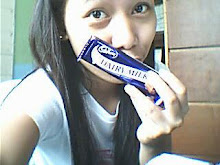Synthesis: July 10, 2009
Ms. Camba continued discussing the other methods of expanded technique definition. Those were etymology, examples, description, operation or process, and negation. Next topic was technical description which was intensively reported by Ms. Buñog using five sources. Firstly, she asked what are the differences between descriptive writing and technical description. She explained that the differences between them are just the same with the differences between descriptive writing and technical writing. Aftrwards, she gave the technical description definition according to Lannon and Reep. Technical description combines words and visuals to create a picture – a clear mental image of the product or a process (Lannon, 2003). It provides readers with precise details about the physical features, appearance or composition of a subject (Reep, 1997). Ms. Buñog said that it gives a clear visual image of a technical subject through the use of precise and informative language. Then, she also discussed its purpose, subjects, elements, and types. Its purpose is to convey useful information about an item to someone who will use it, but it, operate it, or assemble it or to someone who has to know more about it for good reason (Lannon, 1988). Its subjects are mechanism, location, organism, substance, object, and condition. Its elements are clear and limiting title, appropriate level of technicality, objectivity, graphic organizers, and logic of organization. It has two main types: mechanism / product description and process description / instructions. Mechanism or product description makes us understand the function, appearance and operation of a particular subject while process description or instructions explains to us how a change takes place in that subject through a series of stages. Ms. Buñog elaborated also the guidelines in writing each type of technical description and its revision checklist. Mrs. Manzano made us of the term technical partition wherein we include all the parts of an item to be described separately. Moreover, she already gave us the first part of our midterm exam in which we will make a technical description about the original picture of a jeepney. Then, she continued discussing classification, one method of definition, by letting us complete the tree diagram of a computer system she drew on the board. She explained that enumeration is found in the horizontal slices of classification and definition is drawn from the vertical slices of classification. She also reiterated the three parts of classification (the item to be classified, the group to which the item belong and the verb phrase) and the two main patterns in classifying (item-VP-name of group and name of group-VP-items). Moreover, she stated that both active and passive voice of the verb phrase can be used in defining an item. Lastly, she defined classifying agent as the person doing the classification and she enumerated the three possibilities in classifying agent where it maybe clearly presented, implied, or not presented at all. Next meeting, we will be having our midterm exam, and it’s a matter between life and death. If we passed it, we will go on to our subject, and if not, goodbye to us. After that Mrs. Manzano will continue discussing about classification and we will go on to the next presentations. So, this weekend, no happy-go-lucky activities.





No comments:
Post a Comment